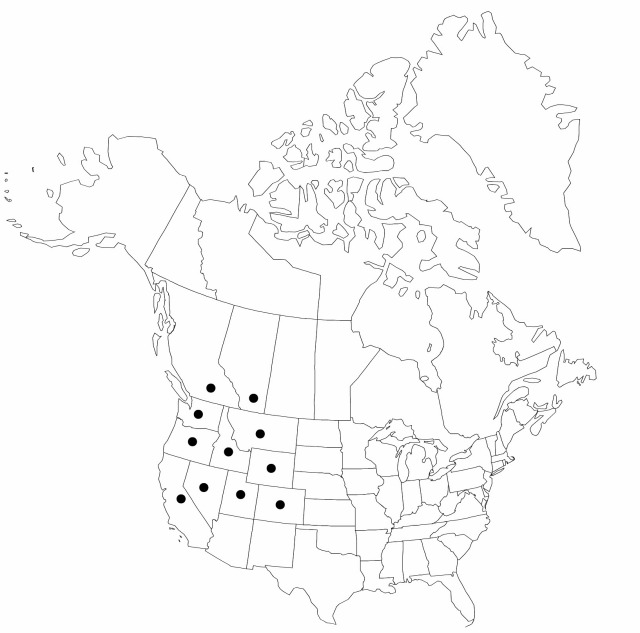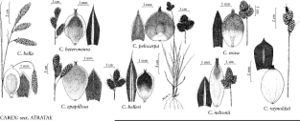Carex epapillosa
in P. A. Rydberg, Fl. Rocky Mts., 138, 1060. 1917.
Plants densely cespitose. Culms to 25–60 (–100) cm, smooth. Leaves 2–6 mm wide. Inflorescences: proximal bracts shorter than or exceeding inflorescences; spikes oblong or clavate, 10–25 × 6–8 mm; proximal spikes separate, usually pendent, often long-pendunculate; distal ones overlapping, erect, contiguous, short-pendunculate; lateral 3–5 spikes pistillate; terminal spike gynecandrous, 1/4 or less staminate. Pistillate scales light to dark-brown, margins hyaline, lanceolate, typically equaling or longer, sometimes shorter and narrower than perigynia, midvein dark, same color as body, inconspicuous, frequently raised, prominent, apex acute to short-mucronate. Perigynia ascending, light to dark-brown with light-brown margins, veinless, obovate or circular, 3.5–4 × 2–3 mm, apex abruptly beaked, smooth; beak 0.3–0.5 mm, shallowly or deeply bidentate, smooth. Achenes filling proximal 1/2 or less of perigynia.
Phenology: Fruiting Jun–Sep.
Habitat: Stream margins in open forest, moist subpalpine and alpine meadows
Elevation: 2000–3700 m
Distribution

Alta., B.C., Calif., Colo., Idaho, Mont., Nev., Oreg., Utah, Wash., Wyo.
Discussion
Intermediates between Carex epapillosa and C. heteroneura occur in California, Nevada, and Utah.
Selected References
None.
Lower Taxa
"shortened" is not a number.
